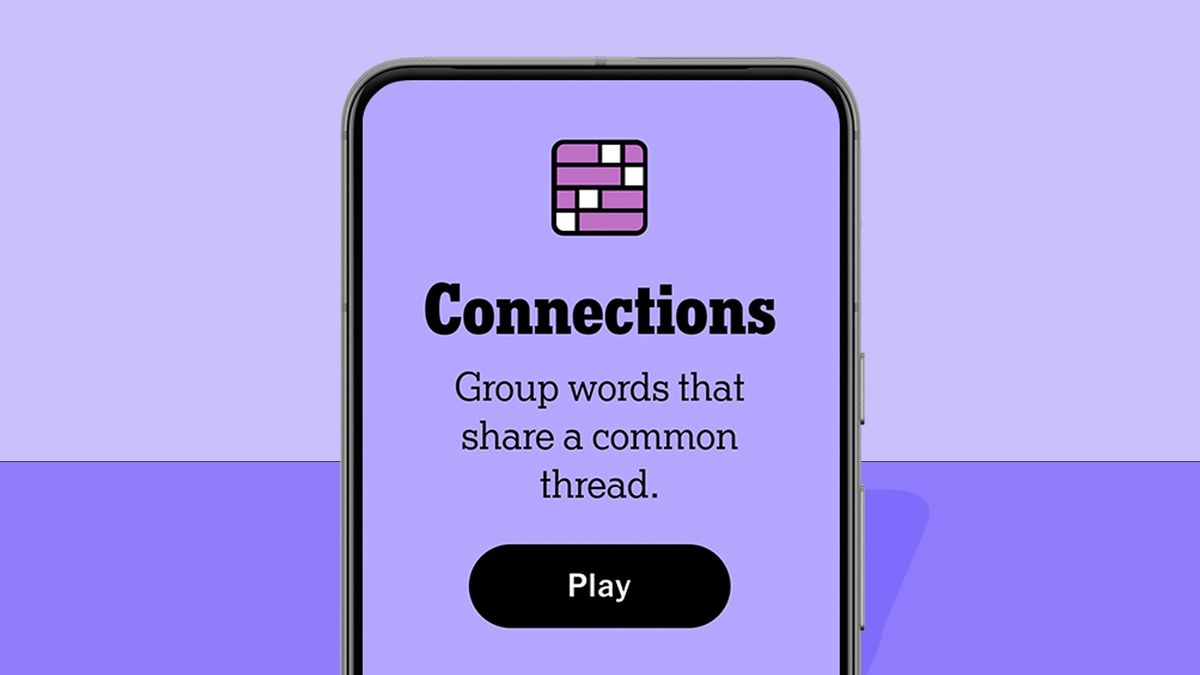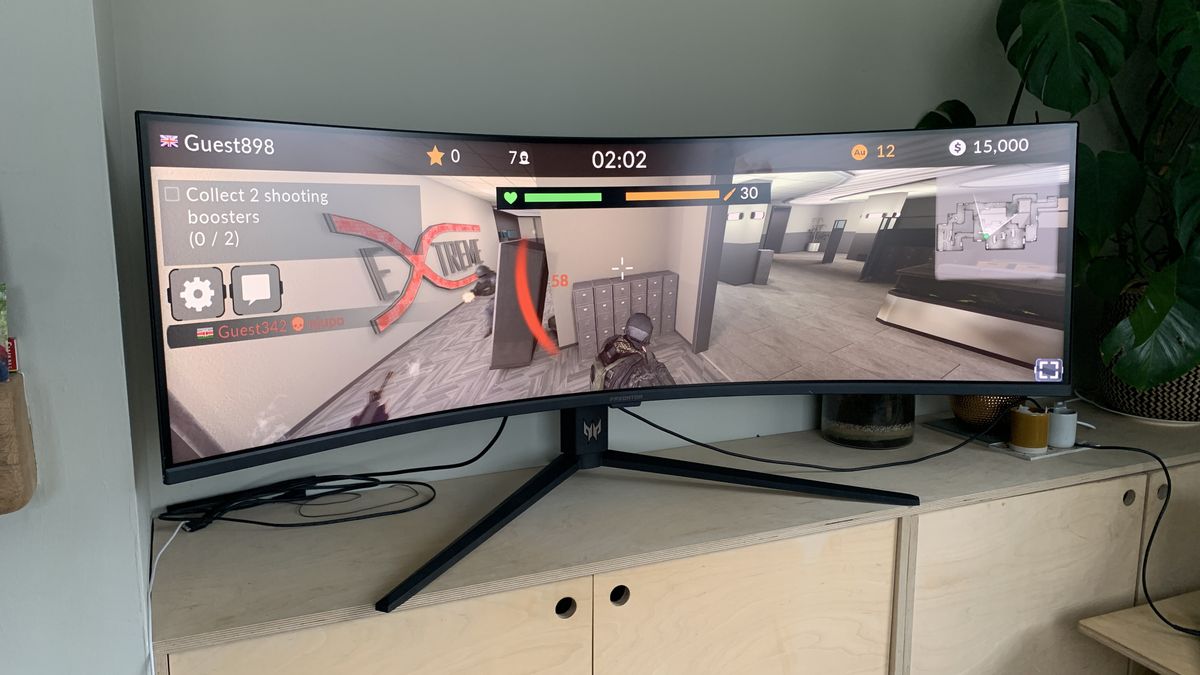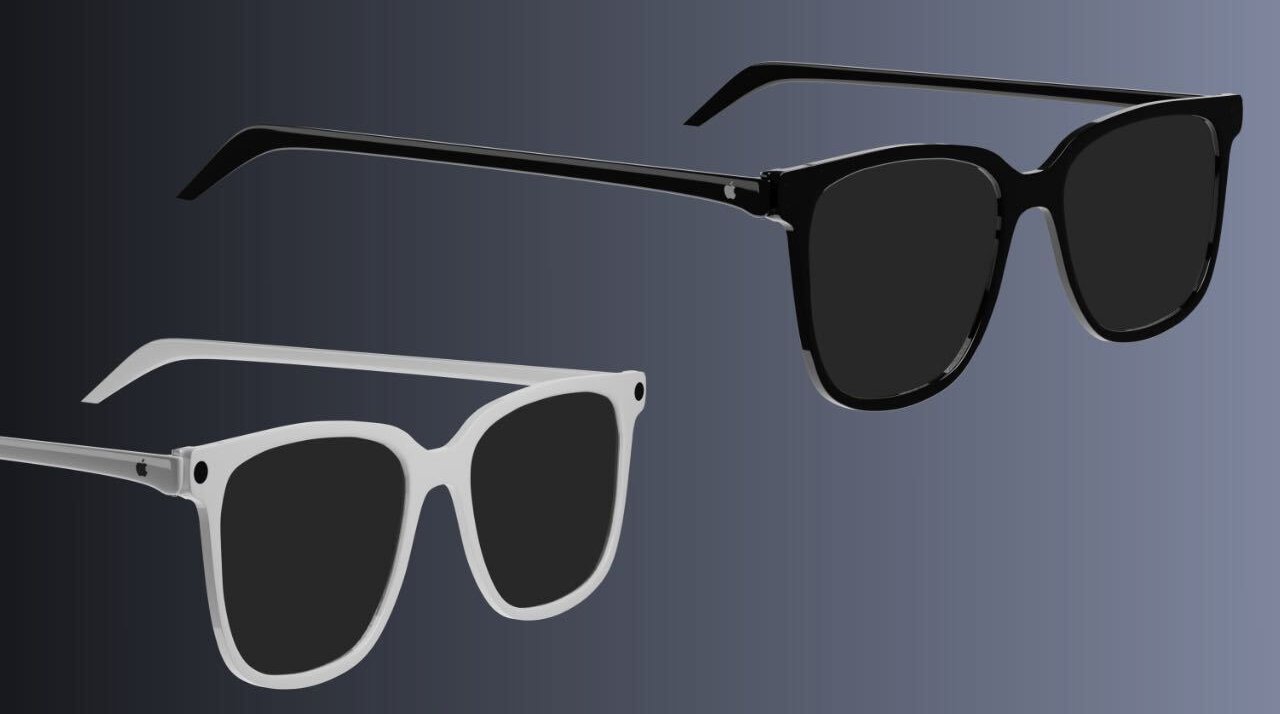0 Σχόλια
0 Μοιράστηκε
75 Views

Κατάλογος
Κατάλογος
-
Παρακαλούμε συνδέσου στην Κοινότητά μας για να δηλώσεις τι σου αρέσει, να σχολιάσεις και να μοιραστείς με τους φίλους σου!
-
 WWW.POLYGON.COMLeague’s current main plot moves forward toward Ionia and the deadly DarkinIf there’s something gamers love in the fantasy genre, it’s when ancient beings are sealed inside cool swords, from which they can only whisper and beguile mortal beings. League of Legends takes this concept even further with the Darkin by creating a whole arsenal of evil weapons containing ancient evils. The Darkin had a rough start in the lore, but the constant cycle of Riot revising and retconning its previous works have led to them becoming one of the most fascinating groups in all of Runeterra. Recent lore revelations suggest that they’re about to become important in the ongoing storyline spun up by the conclusion to Arcane. Wait, what’s up with Noxus? Riot revamped the way seasons work in League of Legends to feel more like narrative events that take the time to explore factions. The first region to benefit from this was Noxus, where we learned more about LeBlanc and Vladimir, the Black Rose, and their ongoing schemes. At the end of the season start cinematic, “Bite Marks,” we see LeBlanc and Vladimir scheming in a direct follow-up to the Arcane finale. “Every new path seems to lead us closer to chaos. Perhaps we should focus on the opportunity that’s washed up on our shores,” says Vladimir, the hemomancer (or blood mage, for the uninitated) with a dark past. The two look at a mysterious rune formed on LeBlanc’s wall of mist and shadows, and Vladimir reacts with anger: “Darling, that is a step too far. Even for us.” We weren’t fully sure what “that” meant until LeBlanc’s new in-game update, which includes new voice lines. If she kills a Darkin in-game, she muses: “Almost too easy. Perhaps you’re not the weapon I seek after all.” On Wednesday, Riot released a new cinematic that follows up “Bite Marks” and the Demon’s Hand in-client card game from March, and it gives us more clarity on the Black Rose’s plans. A Darkin is seemingly hidden in Ionia, the first lands and another hugely popular region in League lore. What’s a Darkin, and why does LeBlanc care about them? The current Darkin canon that we have now is stitched together from a series of retcons and rewrites. Aatrox, who was originally released in 2013, had a vague backstory about being one of an ancient race, of which there were only five remaining. In the current lore, they are fallen god-warriors of a long-dead empire, twisted by trauma and an incredibly destructive force. Shurima is a setting of ruins, the remains of an ancient empire built around a celestial Sun Disc. The Sun Disc is millennia old, and it originally helped Shurima expand into a vast empire. One specific honor for the Shurimans was the ritual of Ascension. Noble figures and mighty warriors could be presented to the Sun Disc, and if found worthy, reincarnated into a massive combination of both man and beast. These would become the fabled god-warriors, the Ascended of Shurima, who inspired awe in any who beheld them. Eventually, the empire would fall in two terrible strokes. First, the emperor’s attempt at Ascension was sabotaged, cracking the Sun Disc and causing a catastrophic shockwave that devastated everything around it. Second, the people of Icathia rose up against the tyrannical emperor, and pulled upon the malignant powers of the Void. They failed, and now Icathia is a festering, extraplanar pit that threatens anyone who settles in southern Shurima. Those who had fought the Void called themselves the Sunborn, and they viciously fought to fill the power vacuum left by the emperor. Their conflict lasted for hundreds of years and threatened all of Runeterra. Even distant Camavor was so threatened that they sent Vladimir, their noble son, off to be a slave to one of these warlords — who are now known as the Darkin. The Darkin were petty and cruel, using war crimes and forbidden arts like blood magic to expand their reach. Ultimately, celestial mages schemed to murder a mass of the remaining Darkin, and then hunted down the survivors, trapping them in weapons. These weapons are prisons that keep their minds conscious and aware but with no physical form. The only chance for escape is a mortal host (or hosts, in the case of Varus and Naafiri) to seize the weapon out of ignorance or desperation. Vladimir killed his own Darkin captor, learned the secrets of blood magic, and escaped to the plains that would later become Noxus. This explains why he’s so hesitant to pursue the Darkin — he had one for a boss, and it didn’t work out well for anyone. So, what comes next? For the moment, we can assume that the Darkin storyline will be continued in season two. This suggests that Ionia will be the most likely destination for the next season of League of Legends, and we may see a Darkin champion emerge. It’s still early days, and Riot has yet to confirm anything about the next season, so all we can do is speculate. However, the latest cinematic seems to foreshadow that the deadly Darkin will return sooner rather than later.0 Σχόλια 0 Μοιράστηκε 73 Views
WWW.POLYGON.COMLeague’s current main plot moves forward toward Ionia and the deadly DarkinIf there’s something gamers love in the fantasy genre, it’s when ancient beings are sealed inside cool swords, from which they can only whisper and beguile mortal beings. League of Legends takes this concept even further with the Darkin by creating a whole arsenal of evil weapons containing ancient evils. The Darkin had a rough start in the lore, but the constant cycle of Riot revising and retconning its previous works have led to them becoming one of the most fascinating groups in all of Runeterra. Recent lore revelations suggest that they’re about to become important in the ongoing storyline spun up by the conclusion to Arcane. Wait, what’s up with Noxus? Riot revamped the way seasons work in League of Legends to feel more like narrative events that take the time to explore factions. The first region to benefit from this was Noxus, where we learned more about LeBlanc and Vladimir, the Black Rose, and their ongoing schemes. At the end of the season start cinematic, “Bite Marks,” we see LeBlanc and Vladimir scheming in a direct follow-up to the Arcane finale. “Every new path seems to lead us closer to chaos. Perhaps we should focus on the opportunity that’s washed up on our shores,” says Vladimir, the hemomancer (or blood mage, for the uninitated) with a dark past. The two look at a mysterious rune formed on LeBlanc’s wall of mist and shadows, and Vladimir reacts with anger: “Darling, that is a step too far. Even for us.” We weren’t fully sure what “that” meant until LeBlanc’s new in-game update, which includes new voice lines. If she kills a Darkin in-game, she muses: “Almost too easy. Perhaps you’re not the weapon I seek after all.” On Wednesday, Riot released a new cinematic that follows up “Bite Marks” and the Demon’s Hand in-client card game from March, and it gives us more clarity on the Black Rose’s plans. A Darkin is seemingly hidden in Ionia, the first lands and another hugely popular region in League lore. What’s a Darkin, and why does LeBlanc care about them? The current Darkin canon that we have now is stitched together from a series of retcons and rewrites. Aatrox, who was originally released in 2013, had a vague backstory about being one of an ancient race, of which there were only five remaining. In the current lore, they are fallen god-warriors of a long-dead empire, twisted by trauma and an incredibly destructive force. Shurima is a setting of ruins, the remains of an ancient empire built around a celestial Sun Disc. The Sun Disc is millennia old, and it originally helped Shurima expand into a vast empire. One specific honor for the Shurimans was the ritual of Ascension. Noble figures and mighty warriors could be presented to the Sun Disc, and if found worthy, reincarnated into a massive combination of both man and beast. These would become the fabled god-warriors, the Ascended of Shurima, who inspired awe in any who beheld them. Eventually, the empire would fall in two terrible strokes. First, the emperor’s attempt at Ascension was sabotaged, cracking the Sun Disc and causing a catastrophic shockwave that devastated everything around it. Second, the people of Icathia rose up against the tyrannical emperor, and pulled upon the malignant powers of the Void. They failed, and now Icathia is a festering, extraplanar pit that threatens anyone who settles in southern Shurima. Those who had fought the Void called themselves the Sunborn, and they viciously fought to fill the power vacuum left by the emperor. Their conflict lasted for hundreds of years and threatened all of Runeterra. Even distant Camavor was so threatened that they sent Vladimir, their noble son, off to be a slave to one of these warlords — who are now known as the Darkin. The Darkin were petty and cruel, using war crimes and forbidden arts like blood magic to expand their reach. Ultimately, celestial mages schemed to murder a mass of the remaining Darkin, and then hunted down the survivors, trapping them in weapons. These weapons are prisons that keep their minds conscious and aware but with no physical form. The only chance for escape is a mortal host (or hosts, in the case of Varus and Naafiri) to seize the weapon out of ignorance or desperation. Vladimir killed his own Darkin captor, learned the secrets of blood magic, and escaped to the plains that would later become Noxus. This explains why he’s so hesitant to pursue the Darkin — he had one for a boss, and it didn’t work out well for anyone. So, what comes next? For the moment, we can assume that the Darkin storyline will be continued in season two. This suggests that Ionia will be the most likely destination for the next season of League of Legends, and we may see a Darkin champion emerge. It’s still early days, and Riot has yet to confirm anything about the next season, so all we can do is speculate. However, the latest cinematic seems to foreshadow that the deadly Darkin will return sooner rather than later.0 Σχόλια 0 Μοιράστηκε 73 Views -
WWW.ENGADGET.COMApple is reportedly working on two new versions of the Vision ProApple hasn’t abandoned its previously rumored plans to release a less expensive Vision Pro, according to Bloomberg. Mark Gurman reports in the Power On newsletter this weekend that the company has two new models in development: one that’s lighter and cheaper than the first generation headset, and one that would tether to a Mac. While Apple had once considered the latter setup for AR glasses, it shifted the idea over to the Vision Pro so it can “create an ultra-low-latency system for streaming a user’s Mac display or for connecting to high-end enterprise applications,” according to Gurman. Apple’s ultimate goal, though, is reportedly to create AR glasses that are practical and comfortable enough to be worn like regular glasses, and the next iterations of the Vision Pro are seen as steps toward getting there. Gurman reports that Apple CEO Tim Cook is “hell-bent on creating an industry-leading product before Meta can.” This article originally appeared on Engadget at https://www.engadget.com/ar-vr/apple-is-reportedly-working-on-two-new-versions-of-the-vision-pro-153536984.html?src=rss0 Σχόλια 0 Μοιράστηκε 92 Views
-
 WWW.TECHRADAR.COMNYT Connections hints and answers for Monday, April 14 (game #673)Looking for NYT Connections answers and hints? Here's all you need to know to solve today's game, plus my commentary on the puzzles.0 Σχόλια 0 Μοιράστηκε 59 Views
WWW.TECHRADAR.COMNYT Connections hints and answers for Monday, April 14 (game #673)Looking for NYT Connections answers and hints? Here's all you need to know to solve today's game, plus my commentary on the puzzles.0 Σχόλια 0 Μοιράστηκε 59 Views -
 WWW.FASTCOMPANY.COMSection 230 helped create the internet. What happens if it goes away?Section 230 of the Communications Decency Act, passed in 1996 as part of the Telecommunications Act, has become a political lightning rod in recent years. The law shields online platforms from liability for user-generated content while allowing moderation in good faith. Lawmakers including Sens. Lindsey Graham, R-S.C., and Dick Durbin, D-Ill., now seek to sunset Section 230 by 2027 in order to spur a renegotiation of its provisions. The senators are expected to hold a press event before April 11 about a bill to start a timer on reforming or replacing Section 230, according to reports. If no agreement is reached by the deadline Section 230 would cease to be law. The debate over the law centers on balancing accountability for harmful content with the risks of censorship and stifled innovation. As a legal scholar, I see dramatic potential effects if Section 230 were to be repealed, with some platforms and websites blocking any potentially controversial content. Imagine Reddit with no critical comments or TikTok stripped of political satire. The law that built the internet Section 230, often described as “the 26 words that created the internet,” arose in response to a 1995 ruling penalizing platforms for moderating content. The key provision of the law, (c)(1), states that “no provider or user of an interactive computer service shall be treated as the publisher or speaker of any information provided by another information content provider.” This immunizes platforms such as Facebook and Yelp from liability for content posted by users. Importantly, Section 230 does not offer blanket immunity. It does not shield platforms from liability related to federal criminal law, intellectual property infringement, sex trafficking or where platforms codevelop unlawful content. At the same time, Section 230 allows platform companies to moderate content as they see fit, letting them block harmful or offensive content that is permitted by the First Amendment. Some critics argue that the algorithms social media platforms use to feed content to users are a form of content creation and should be outside the scope of Section 230 immunity. In addition, Federal Communications Commission Chairman Brendan Carr has signaled a more aggressive stance toward Big Tech, advocating for a rollback of Section 230’s protections to address what he perceives as biased content moderation and censorship. Censorship and the moderation dilemma Opponents warn that repealing Section 230 could lead to increased censorship, a flood of litigation and a chilling effect on innovation and free expression. Section 230 grants complete immunity to platforms for third-party activities regardless of whether the challenged speech is unlawful, according to a February 2024 report from the Congressional Research Service. In contrast, immunity via the First Amendment requires an inquiry into whether the challenged speech is constitutionally protected. Without immunity, platforms could be treated as publishers and held liable for defamatory, harmful or illegal content their users post. Platforms could adopt a more cautious approach, removing legally questionable material to avoid litigation. They could also block potentially controversial content, which could leave less space for voices of marginalized people. MIT management professor Sinan Aral warned, “If you repeal Section 230, one of two things will happen. Either platforms will decide they don’t want to moderate anything, or platforms will moderate everything.” The overcautious approach, sometimes called “collateral censorship,” could lead platforms to remove a broader swath of speech, including lawful but controversial content, to protect against potential lawsuits. Yelp’s general counsel noted that without Section 230, platforms may feel forced to remove legitimate negative reviews, depriving users of critical information. Corbin Barthold, a lawyer with the nonprofit advocacy organization TechFreedom, warned that some platforms might abandon content moderation to avoid liability for selective enforcement. This would result in more online spaces for misinformation and hate speech, he wrote. However, large platforms would likely not choose this route to avoid backlash from users and advertisers. A legal minefield Section 230(e) currently preempts most state laws that would hold platforms liable for user content. This preemption maintains a uniform legal standard at the federal level. Without it, the balance of power would shift, allowing states to regulate online platforms more aggressively. Some states could pass laws imposing stricter content moderation standards, requiring platforms to remove certain types of content within defined time frames or mandating transparency in content moderation decisions. Conversely, some states may seek to limit moderation efforts to preserve free speech, creating conflicting obligations for platforms that operate nationally. Litigation outcomes could also become inconsistent as courts across different jurisdictions apply varying standards to determine platform liability. The lack of uniformity would make it difficult for platforms to establish consistent content moderation practices, further complicating compliance efforts. The chilling effect on expression and innovation would be especially pronounced for new market entrants. While major players such as Facebook and YouTube might be able to absorb the legal pressure, smaller competitors could be forced out of the market or rendered ineffective. Small or midsize businesses with a website could be targeted by frivolous lawsuits. The high cost of compliance could deter many from entering the market. Reform without ruin The nonprofit advocacy group Electronic Frontier Foundation warned, “The free and open internet as we know it couldn’t exist without Section 230.” The law has been instrumental in fostering the growth of the internet by enabling platforms to operate without the constant threat of lawsuits over user-generated content. Section 230 also lets platforms organize and tailor user-generated content. The potential repeal of Section 230 would fundamentally alter this legal landscape, reshaping how platforms operate, increasing their exposure to litigation and redefining the relationship between the government and online intermediaries. Daryl Lim is a professor of law and associate dean for research and innovation at Penn State. This article is republished from The Conversation under a Creative Commons license. Read the original article.0 Σχόλια 0 Μοιράστηκε 87 Views
WWW.FASTCOMPANY.COMSection 230 helped create the internet. What happens if it goes away?Section 230 of the Communications Decency Act, passed in 1996 as part of the Telecommunications Act, has become a political lightning rod in recent years. The law shields online platforms from liability for user-generated content while allowing moderation in good faith. Lawmakers including Sens. Lindsey Graham, R-S.C., and Dick Durbin, D-Ill., now seek to sunset Section 230 by 2027 in order to spur a renegotiation of its provisions. The senators are expected to hold a press event before April 11 about a bill to start a timer on reforming or replacing Section 230, according to reports. If no agreement is reached by the deadline Section 230 would cease to be law. The debate over the law centers on balancing accountability for harmful content with the risks of censorship and stifled innovation. As a legal scholar, I see dramatic potential effects if Section 230 were to be repealed, with some platforms and websites blocking any potentially controversial content. Imagine Reddit with no critical comments or TikTok stripped of political satire. The law that built the internet Section 230, often described as “the 26 words that created the internet,” arose in response to a 1995 ruling penalizing platforms for moderating content. The key provision of the law, (c)(1), states that “no provider or user of an interactive computer service shall be treated as the publisher or speaker of any information provided by another information content provider.” This immunizes platforms such as Facebook and Yelp from liability for content posted by users. Importantly, Section 230 does not offer blanket immunity. It does not shield platforms from liability related to federal criminal law, intellectual property infringement, sex trafficking or where platforms codevelop unlawful content. At the same time, Section 230 allows platform companies to moderate content as they see fit, letting them block harmful or offensive content that is permitted by the First Amendment. Some critics argue that the algorithms social media platforms use to feed content to users are a form of content creation and should be outside the scope of Section 230 immunity. In addition, Federal Communications Commission Chairman Brendan Carr has signaled a more aggressive stance toward Big Tech, advocating for a rollback of Section 230’s protections to address what he perceives as biased content moderation and censorship. Censorship and the moderation dilemma Opponents warn that repealing Section 230 could lead to increased censorship, a flood of litigation and a chilling effect on innovation and free expression. Section 230 grants complete immunity to platforms for third-party activities regardless of whether the challenged speech is unlawful, according to a February 2024 report from the Congressional Research Service. In contrast, immunity via the First Amendment requires an inquiry into whether the challenged speech is constitutionally protected. Without immunity, platforms could be treated as publishers and held liable for defamatory, harmful or illegal content their users post. Platforms could adopt a more cautious approach, removing legally questionable material to avoid litigation. They could also block potentially controversial content, which could leave less space for voices of marginalized people. MIT management professor Sinan Aral warned, “If you repeal Section 230, one of two things will happen. Either platforms will decide they don’t want to moderate anything, or platforms will moderate everything.” The overcautious approach, sometimes called “collateral censorship,” could lead platforms to remove a broader swath of speech, including lawful but controversial content, to protect against potential lawsuits. Yelp’s general counsel noted that without Section 230, platforms may feel forced to remove legitimate negative reviews, depriving users of critical information. Corbin Barthold, a lawyer with the nonprofit advocacy organization TechFreedom, warned that some platforms might abandon content moderation to avoid liability for selective enforcement. This would result in more online spaces for misinformation and hate speech, he wrote. However, large platforms would likely not choose this route to avoid backlash from users and advertisers. A legal minefield Section 230(e) currently preempts most state laws that would hold platforms liable for user content. This preemption maintains a uniform legal standard at the federal level. Without it, the balance of power would shift, allowing states to regulate online platforms more aggressively. Some states could pass laws imposing stricter content moderation standards, requiring platforms to remove certain types of content within defined time frames or mandating transparency in content moderation decisions. Conversely, some states may seek to limit moderation efforts to preserve free speech, creating conflicting obligations for platforms that operate nationally. Litigation outcomes could also become inconsistent as courts across different jurisdictions apply varying standards to determine platform liability. The lack of uniformity would make it difficult for platforms to establish consistent content moderation practices, further complicating compliance efforts. The chilling effect on expression and innovation would be especially pronounced for new market entrants. While major players such as Facebook and YouTube might be able to absorb the legal pressure, smaller competitors could be forced out of the market or rendered ineffective. Small or midsize businesses with a website could be targeted by frivolous lawsuits. The high cost of compliance could deter many from entering the market. Reform without ruin The nonprofit advocacy group Electronic Frontier Foundation warned, “The free and open internet as we know it couldn’t exist without Section 230.” The law has been instrumental in fostering the growth of the internet by enabling platforms to operate without the constant threat of lawsuits over user-generated content. Section 230 also lets platforms organize and tailor user-generated content. The potential repeal of Section 230 would fundamentally alter this legal landscape, reshaping how platforms operate, increasing their exposure to litigation and redefining the relationship between the government and online intermediaries. Daryl Lim is a professor of law and associate dean for research and innovation at Penn State. This article is republished from The Conversation under a Creative Commons license. Read the original article.0 Σχόλια 0 Μοιράστηκε 87 Views -
 WWW.YANKODESIGN.COMA 16th Century Maltese Passageway Was Revived & Transformed Into A Chic Sustainable Micro ApartmentStudio NiCHE in Malta has unveiled its newest project, converting a historic karrejja—a narrow, often vaulted passageway characteristic of 16th-century Maltese architecture—into an amazing 28-square-meter (301-square-foot) studio that blends history with innovation. Named The Blue Room, this compact apartment is a component of a newly finished luxury guesthouse. Designed by Martina Fenech Adami, it cleverly showcases how micro-living can be both chic and sustainable. The studio apartment is located within a 16th-century building, preserving its original limestone exterior while adopting a bold and modern identity. Instead of rebuilding entirely, Studio NiCHE opted to conserve the existing structure, thereby significantly reducing the project’s overall carbon footprint, which is commendable. “Sustainability starts with what’s already there,” said Fenech Adami. Designer: Studio NiCHE Within the apartment, a deliberate diagonal floor pattern guides the eye, creating the illusion of a larger space. This diagonal design also enhances the flow and functionality of the compact area. Space-efficient custom joinery was implemented, enabling the integration of a modern kitchen, a hidden sleeping nook, and concealed storage into a seamless design. “It’s about opening up perceived volume, not adding square meters,” said Fenech Adami. The sleeping area is slightly elevated above the living space and concealed by a draw curtain, creating a clear separation between the two connected zones. While, a foldable futon-style bed allows the area to be easily transformed for various activities, such as entertaining, yoga, or home workouts. The kitchen features a sleek breakfast bar that overlooks the terrace, enhancing the home’s sense of space, light, and volume. The space is adorned with mirrors, including a mirrored backsplash in the kitchen, that reflect light throughout the interior, making the compact living space feel open and bright. The small bathroom is decorated with a red glass mosaic, transforming it into a playful and light-filled chamber. The interior features a colorful palette with minimalist themes, using blue and limestone beige to echo Malta’s coastal hues and vibrant red accents for contrast. The exposed concrete ceiling, though raw and textural, contrasts with the interior’s refined elegance. The 10-square-meter (107-square-foot) outdoor terrace features a custom limestone planter replacing a traditional balustrade, merging greenery with architecture and creating a buffer from urban surroundings. Completed in under three months, The Blue Room focused on precise fabrication of bespoke furnishings. This unique micro-apartment, designed for short stays, offers a compact and contemplative living space, blending minimalist design with functional elegance in a quietly radical manner. “The Blue Room is a celebration of possibility within constraint,” concluded Fenech Adami. This beautiful home is proof of how thoughtfully designed living spaces can enhance and elevate our lifestyle, improving our standard of living. The post A 16th Century Maltese Passageway Was Revived & Transformed Into A Chic Sustainable Micro Apartment first appeared on Yanko Design.0 Σχόλια 0 Μοιράστηκε 83 Views
WWW.YANKODESIGN.COMA 16th Century Maltese Passageway Was Revived & Transformed Into A Chic Sustainable Micro ApartmentStudio NiCHE in Malta has unveiled its newest project, converting a historic karrejja—a narrow, often vaulted passageway characteristic of 16th-century Maltese architecture—into an amazing 28-square-meter (301-square-foot) studio that blends history with innovation. Named The Blue Room, this compact apartment is a component of a newly finished luxury guesthouse. Designed by Martina Fenech Adami, it cleverly showcases how micro-living can be both chic and sustainable. The studio apartment is located within a 16th-century building, preserving its original limestone exterior while adopting a bold and modern identity. Instead of rebuilding entirely, Studio NiCHE opted to conserve the existing structure, thereby significantly reducing the project’s overall carbon footprint, which is commendable. “Sustainability starts with what’s already there,” said Fenech Adami. Designer: Studio NiCHE Within the apartment, a deliberate diagonal floor pattern guides the eye, creating the illusion of a larger space. This diagonal design also enhances the flow and functionality of the compact area. Space-efficient custom joinery was implemented, enabling the integration of a modern kitchen, a hidden sleeping nook, and concealed storage into a seamless design. “It’s about opening up perceived volume, not adding square meters,” said Fenech Adami. The sleeping area is slightly elevated above the living space and concealed by a draw curtain, creating a clear separation between the two connected zones. While, a foldable futon-style bed allows the area to be easily transformed for various activities, such as entertaining, yoga, or home workouts. The kitchen features a sleek breakfast bar that overlooks the terrace, enhancing the home’s sense of space, light, and volume. The space is adorned with mirrors, including a mirrored backsplash in the kitchen, that reflect light throughout the interior, making the compact living space feel open and bright. The small bathroom is decorated with a red glass mosaic, transforming it into a playful and light-filled chamber. The interior features a colorful palette with minimalist themes, using blue and limestone beige to echo Malta’s coastal hues and vibrant red accents for contrast. The exposed concrete ceiling, though raw and textural, contrasts with the interior’s refined elegance. The 10-square-meter (107-square-foot) outdoor terrace features a custom limestone planter replacing a traditional balustrade, merging greenery with architecture and creating a buffer from urban surroundings. Completed in under three months, The Blue Room focused on precise fabrication of bespoke furnishings. This unique micro-apartment, designed for short stays, offers a compact and contemplative living space, blending minimalist design with functional elegance in a quietly radical manner. “The Blue Room is a celebration of possibility within constraint,” concluded Fenech Adami. This beautiful home is proof of how thoughtfully designed living spaces can enhance and elevate our lifestyle, improving our standard of living. The post A 16th Century Maltese Passageway Was Revived & Transformed Into A Chic Sustainable Micro Apartment first appeared on Yanko Design.0 Σχόλια 0 Μοιράστηκε 83 Views -
 WWW.CREATIVEBLOQ.COMI had to create a bespoke workspace just to test this enormous curved monitor – it's a gamer's dreamBut not so good for creatives.0 Σχόλια 0 Μοιράστηκε 80 Views
WWW.CREATIVEBLOQ.COMI had to create a bespoke workspace just to test this enormous curved monitor – it's a gamer's dreamBut not so good for creatives.0 Σχόλια 0 Μοιράστηκε 80 Views -
 WWW.WIRED.COMThe Best TV Deals on 2024 Models to Skip the TariffsThere are some great deals on last year's top TVs and soundbars.0 Σχόλια 0 Μοιράστηκε 64 Views
WWW.WIRED.COMThe Best TV Deals on 2024 Models to Skip the TariffsThere are some great deals on last year's top TVs and soundbars.0 Σχόλια 0 Μοιράστηκε 64 Views -
 WWW.MACWORLD.COMApple gets a tariff exemption on iPhones and, well, everything elseMacworld After a week of fears, uncertainty, and doubt, President Trump dropped a surprise on Saturday that will be music to Tim Cook’s ears: All of Apple’s products are exempt from the 125 percent tariffs placed this week on China imports. That follows a 90-day pause on tariffs on all other countries. The exemption covers a wide variety of tech products, including smartphones, laptops, hard drives, and, processors, as well as headphones and smart speakers. That’s basically everything Apple sells, with the possible exception of some accessories such as Apple Pencil and Magic Mouse. For now, it seems that it will be business as usual at Apple Park, with no immediate concern of rising prices. However, the situation could change at any moment. Just this week, Trump raised tariffs, paused tariffs, threatened more tariffs, took aim at TSMC by threatening a 100 percent tax, and exempted basically anything with a microchip. So Apple’s reprieve may be temporary. Trump’s moves have been unpredictable—including Saturday’s exemption—so it’s unclear what could happen next. For example, a 20 percent “fentanyl” tariff seemingly remains on China’s imports for all products, and U.S. commerce secretary Howard Lutnick said smartphones and other consumer electronics may still be hit with separate tariffs. So, Trump could decide to levy further tariffs or alter the list of exempted products. But for now, the fears around price hikes, especially with the iPhone 17 just months away, have calmed.0 Σχόλια 0 Μοιράστηκε 76 Views
WWW.MACWORLD.COMApple gets a tariff exemption on iPhones and, well, everything elseMacworld After a week of fears, uncertainty, and doubt, President Trump dropped a surprise on Saturday that will be music to Tim Cook’s ears: All of Apple’s products are exempt from the 125 percent tariffs placed this week on China imports. That follows a 90-day pause on tariffs on all other countries. The exemption covers a wide variety of tech products, including smartphones, laptops, hard drives, and, processors, as well as headphones and smart speakers. That’s basically everything Apple sells, with the possible exception of some accessories such as Apple Pencil and Magic Mouse. For now, it seems that it will be business as usual at Apple Park, with no immediate concern of rising prices. However, the situation could change at any moment. Just this week, Trump raised tariffs, paused tariffs, threatened more tariffs, took aim at TSMC by threatening a 100 percent tax, and exempted basically anything with a microchip. So Apple’s reprieve may be temporary. Trump’s moves have been unpredictable—including Saturday’s exemption—so it’s unclear what could happen next. For example, a 20 percent “fentanyl” tariff seemingly remains on China’s imports for all products, and U.S. commerce secretary Howard Lutnick said smartphones and other consumer electronics may still be hit with separate tariffs. So, Trump could decide to levy further tariffs or alter the list of exempted products. But for now, the fears around price hikes, especially with the iPhone 17 just months away, have calmed.0 Σχόλια 0 Μοιράστηκε 76 Views -
 APPLEINSIDER.COMTim Cook really wants Apple Glass to become a realityThe fabled Apple Glass continues to be in development, with augmented reality glasses still a top priority for CEO Tim Cook to produce.Optimistic renders of what Apple Glass could look like - Image Credit: AppleInsiderHeadset initiatives like the Apple Vision Pro are a gradual step towards smaller, lighter smart glasses that provide augmented reality experiences to the user. This future concept is rumored to be in development at Apple, under the name of Apple Glass.While the Apple Vision Pro has had a relatively shaky start, CEO Tim Cook is still very much interested in producing Apple Glass. He's wanted the product to be created for over a decade. Rumor Score: 🤔 Possible Continue Reading on AppleInsider | Discuss on our Forums0 Σχόλια 0 Μοιράστηκε 82 Views
APPLEINSIDER.COMTim Cook really wants Apple Glass to become a realityThe fabled Apple Glass continues to be in development, with augmented reality glasses still a top priority for CEO Tim Cook to produce.Optimistic renders of what Apple Glass could look like - Image Credit: AppleInsiderHeadset initiatives like the Apple Vision Pro are a gradual step towards smaller, lighter smart glasses that provide augmented reality experiences to the user. This future concept is rumored to be in development at Apple, under the name of Apple Glass.While the Apple Vision Pro has had a relatively shaky start, CEO Tim Cook is still very much interested in producing Apple Glass. He's wanted the product to be created for over a decade. Rumor Score: 🤔 Possible Continue Reading on AppleInsider | Discuss on our Forums0 Σχόλια 0 Μοιράστηκε 82 Views




